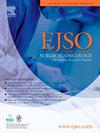Short-term morbidity following primary closure, skin grafting and flap reconstruction after surgical resection of extremity soft-tissue sarcomas: Pushing the limits of limb preservation
IF 3.5
2区 医学
Q2 ONCOLOGY
引用次数: 0
Abstract
Introduction
Understanding short-term morbidity following extremity soft-tissue sarcoma (ESTS) treatment remains complex due to diverse findings and the absence of a standardized wound complication assessment. This retrospective cohort study evaluated short-term morbidity following primary closure, skin grafting, and flap reconstruction.
Materials and methods
All ESTS patients treated in a sarcoma center in the Netherlands from 1-1–2010 until 1-8-2022 were included. Short-term morbidity, defined as a wound complication following surgery, was assessed by the Toronto Sarcoma Flap Score (TSFS). The TSFS is an ordinal scale, where 0 indicates the absence of complications, while 10 signifies reconstructive failure necessitating amputation. Hospital stay duration and readmission rates were also analyzed.
Results
Limb preservation was achieved in 128 (97.7 %) of 131 patients. Wound complications occurred in 43 (44.3 %) of patients with primary closure, 8 (57.1 %) with skin grafting and 16 (80.0 %) with flap reconstruction, p = 0.01. Patients undergoing flap reconstructions had higher TSFSs (6 [IQR 7], versus 0 [IQR 3] for primary closure and 3 [IQR 6] for skin grafting), longer duration of hospital stays (14 [IQR 18] days versus 4 [IQR 3] days for primary closure and 5 [IQR 7] days for skin grafting, p < 0.01) and were more frequently readmitted (40.0 %, versus 17.5 % for primary closure and 21.4 % for skin grafting, p = 0.09).
Conclusion
High limb preservation rates were achieved. Reconstructive surgery allows for the closure of extensive soft-tissue defects following ESTS resection, but it adds to surgical complexity. Patients undergoing flap reconstruction seem to be at a higher risk of short-term morbidity.
求助全文
约1分钟内获得全文
求助全文
来源期刊

Ejso
医学-外科
CiteScore
6.40
自引率
2.60%
发文量
1148
审稿时长
41 days
期刊介绍:
JSO - European Journal of Surgical Oncology ("the Journal of Cancer Surgery") is the Official Journal of the European Society of Surgical Oncology and BASO ~ the Association for Cancer Surgery.
The EJSO aims to advance surgical oncology research and practice through the publication of original research articles, review articles, editorials, debates and correspondence.
 求助内容:
求助内容: 应助结果提醒方式:
应助结果提醒方式:


